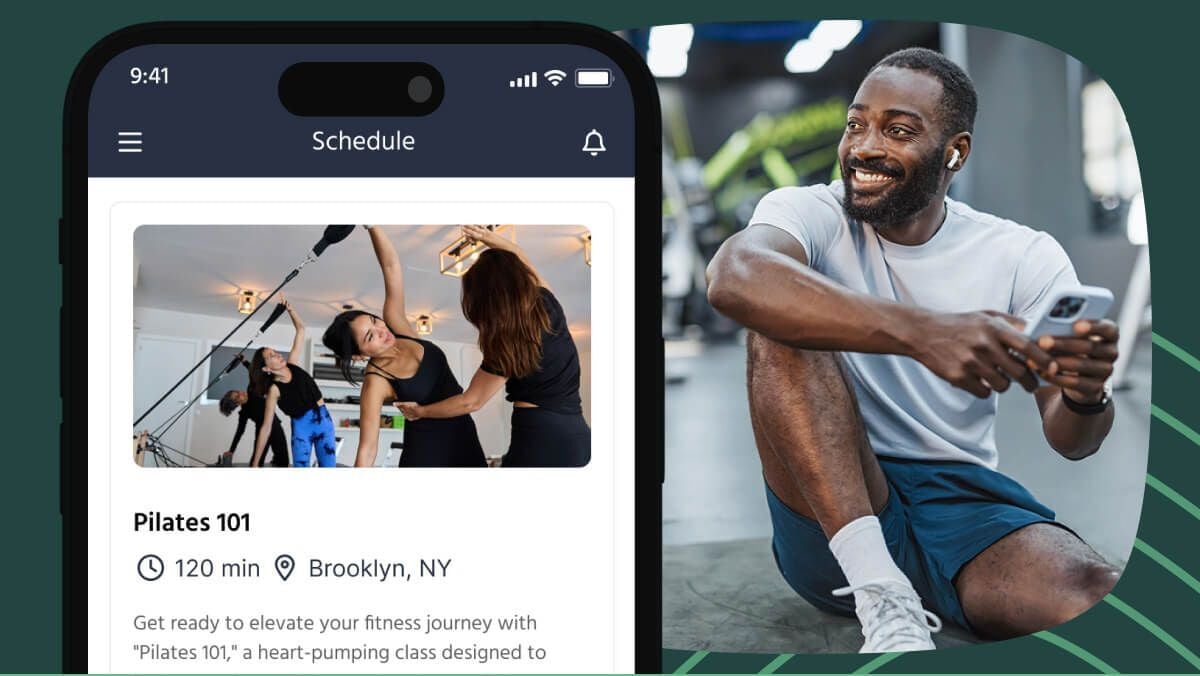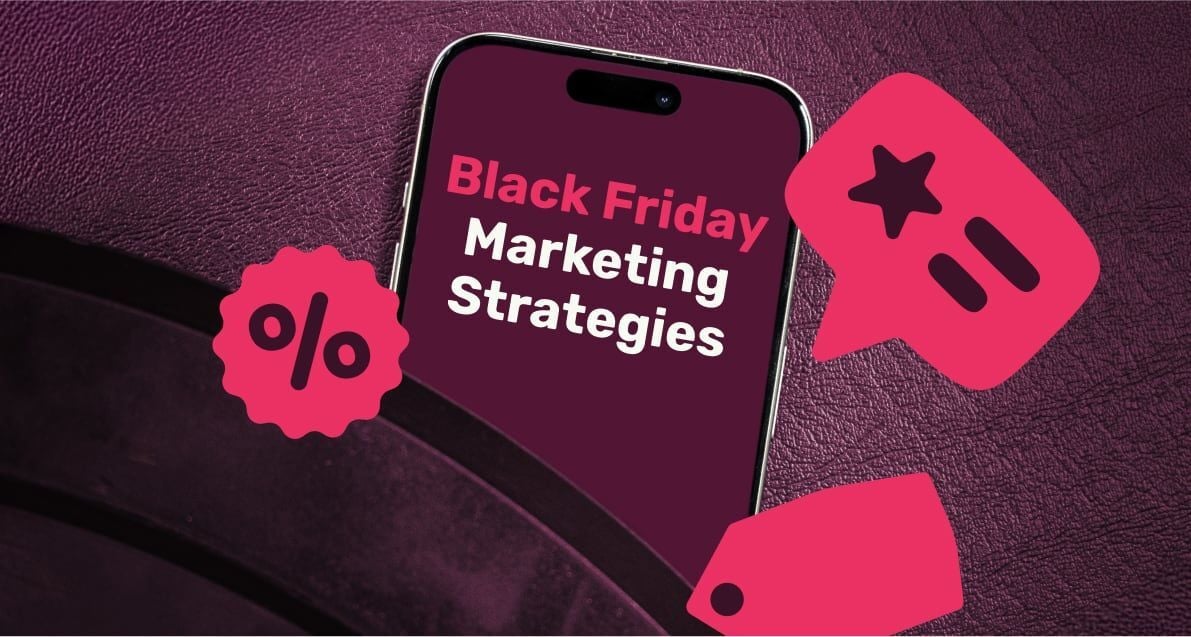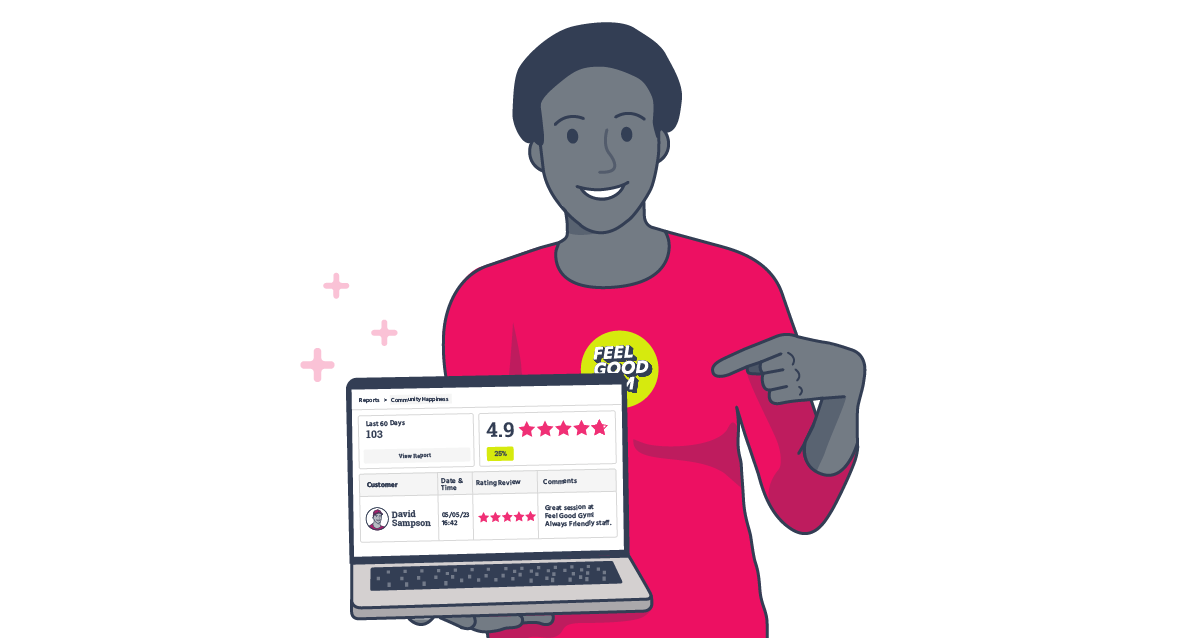The fitness industry is constantly evolving, and with the increasing reliance on social media and technology, marketing has become a no-brainer for any fitness business looking to succeed.
Attracting new customers and standing out in a competitive market requires a strong marketing strategy focusing on building a robust brand and engaging potential customers seamlessly and naturally.
With the shift in consumer behavior, gyms and fitness centers increasingly emphasize digital and mobile channels to acquire new customers.
Creating effective marketing campaigns that target the ideal customer and provide value is essential for the growth of fitness businesses.
Whether you are a modern fitness founder, a small gym owner, or someone looking to start a gym business, understanding the digital marketing landscape and implementing innovative marketing strategies is key to thriving in the fitness industry.
What is fitness marketing?

Insider insight
“Fitness marketing is the process of creating and executing a marketing plan that promotes fitness-related products or services. This can include fitness clubs, fitness equipment, fitness apparel, or any other type of product or service that is related to fitness. Fitness marketing aims to attract customers, increase brand awareness, and drive revenue.”
Tim Green | COO at TeamUp, a DaySmart Company (Tim holds an MBA in marketing and has a successful career in marketing)

Fitness marketing strategies can include building a user-friendly website with SEO optimization, utilizing social media marketing to engage with your audience, offering referral programs, and running influencer marketing campaigns.
In today's digital age, fitness businesses face an increasingly competitive market and rapidly changing customer preferences. As a result, adapting and evolving to these changes is crucial for long-term success in the industry.
Key types of fitness marketing
There are eight key types of fitness marketing: social media, content, SEO, email, paid, direct, influencer, and event marketing.
Each type offers unique advantages and can be tailored to meet specific goals and target audiences in the fitness industry.
Let's dive into each type of fitness marketing and explore how each can be leveraged to boost your fitness business effectively.
1. Social media marketing
Imagine captivating your audience with live workouts and interactive Q&A sessions on platforms like Instagram and Facebook.
Picture analyzing your social media stats to uncover what makes your followers tick — this insight is gold for tailoring your content to keep them coming back for more.
Think about launching fun challenges or contests to spark excitement and community engagement.
2. Content marketing
Envision your blog or YouTube channel as a treasure trove of fitness wisdom, brimming with diverse content like inspiring transformation stories, easy-to-follow workout guides, and nutrition tips.
Insider insight
“Early adopters of content marketing are learning how to connect, educate and engage their audiences while increasing brand awareness and positioning themselves as industry leaders.”
Holly Rollins | 3x CMI Content Maven Winner and president of 10x digital
Keep your audience hooked with a consistent stream of fresh, relevant content that speaks in your unique brand voice, turning casual visitors into loyal fans.
3. Search engine optimization (SEO)
SEO isn't just about algorithms; it's about connecting with people who are searching for what you offer and genuinely helping them through your content. Give our content a read to understand more about SEO for gyms and fitness businesses.
Dive into keyword research like a detective, to see what people are searching for and use them appropriately on your website to capture an audience and convert them as your client. Our keyword research guide for gyms will help you get a head start even if you are a total beginner.
For those with a physical location, local SEO isn't just an option; it's a necessity — it's like planting a flag on Google's map, saying, "We're here and ready to help!" Learn how to create a Google Business Page (formerly known as GMB or Google My Business)
4. Email marketing
Think of your email list as a direct line to your most engaged audience. Use it to send personalized fitness tips, exclusive offers, and insider updates that make each subscriber feel special.
Set up automated email journeys that nurture new leads and keep regular clients feeling valued and connected. Start with our email marketing guide for fitness businesses.
5. Paid advertising
Paid ads are your secret weapon to cut through the digital clutter. Experiment with various ad types and targeting to find the sweet spot that resonates with your ideal client profile.
Track every click and conversion to refine your strategy, ensuring every ad dollar counts continually. Don’t know where to start? Check out our guide for paid advertising for gyms.
6. Direct marketing
Direct marketing is your chance to get personal.
It's like extending a handshake and saying, "Let's do this fitness journey together."
Whether it's a heartfelt postcard, a friendly phone call, or a personal message, make each interaction count by adding that personal touch that builds trust and rapport.
7. Influencer marketing
Influencer collaborations can be a game-changer. It's about finding those fitness enthusiasts whose followers hang onto their every word.
When they talk about your brand, it's not just advertising — it's a trusted recommendation.
Measure the success of these partnerships not just in likes and shares but in the real engagement and interest they bring to your brand.
Check out TeamUp’s guide for influencer marketing for gyms.
8. Event marketing
Events are where the magic happens — they bring your brand to life. Whether a local yoga class in the park or an online fitness challenge, events are your opportunity to shine and show what your brand is all about.
Connect with other local businesses or online communities to amplify your reach and impact, creating memorable experiences that attendees will associate with your fitness brand.
Insider insight
“Local events such as street fairs, holiday markets, parades, art walks, outdoor concerts, and sidewalk sales can be a great place to meet members of your community and introduce them to your business offerings. ”
Tabitha Naylor | Owner of Tabitha Naylor marketing firm
Why is digital marketing important?
Digital marketing is essential for the growth of fitness businesses, offering numerous benefits that contribute to their success.
By leveraging digital marketing strategies, fitness companies can reach a wider audience, build brand awareness, and engage with potential customers effectively.
This approach also provides valuable customer insights, enabling businesses to tailor their marketing efforts for maximum impact.
Digital marketing allows fitness businesses to create high-quality content, utilize influencer partnerships, and track ROI, ultimately leading to increased revenue and a competitive edge in the industry.
Knowing your audience
Knowing your audience in fitness marketing is like having a one-on-one session with a client.
You need to know their pulse, challenges, goals, and digital hangouts. Create detailed buyer personas as if you're designing personalized fitness plans.
Use social listening like a fitness tracker, gauging your brand's health in the digital conversation space.
It's about tuning into the online buzz and aligning your marketing to the rhythm of your audience's needs and conversations.
Crafting the right message at the right time
Crafting the right marketing message at the perfect moment is like nailing the timing in a high-intensity interval workout. It's all about precision and impact.
Sync your marketing messages with seasonal trends — a New Year's fitness resolution campaign or a summer beach-body blitz. Personalize your approach like a tailored diet plan, using data to serve your audience's needs.
It's not just sending a message; it's about making it land with the impact of a perfectly executed fitness routine.
Developing a marketing strategy
Imagine crafting your marketing strategy as you would a client's fitness plan. Start by scoping out the competition — it's like sizing up the other players in a race and understanding their strengths and weaknesses.
Then, map your customer's journey like plotting a challenging yet rewarding fitness trail, pinpointing where you can motivate and engage them along their path.
It's not just planning; it's strategizing with a keen eye on the prize.
Leveraging technology in marketing
Step into the world of advanced marketing technology as if you're stepping onto the latest high-tech treadmill.
Harness AI and machine learning to personalize your campaigns, giving them that extra edge, like a trainer who knows when to push for one more rep.
Seamlessly integrate your marketing efforts with your gym management software — think of it as syncing your fitness devices for optimal performance and insights.
This is where tech-savvy meets fitness flair.
Measuring marketing success
Measuring your marketing success is akin to tracking fitness progress. Dive into ROI analysis with the same zest as you would in monitoring muscle gains and fat loss.
Use customer feedback and surveys as your fitness tracker for your marketing efforts, providing invaluable insights straight from the source.
It's not just about counting numbers; it's understanding the story they tell and using that knowledge to sculpt your future marketing moves into shape.
Frequently asked questions
How can I differentiate my gym's marketing strategy from competitors?
Highlight your gym's unique features, like specialized classes or community initiatives, and consistently showcase these in your marketing efforts.
What are cost-effective marketing strategies for small gym businesses?
Utilize social media for organic engagement and consider email marketing for its efficiency and high return on investment.
How frequently should I update my fitness marketing plan?
Review and adjust your marketing plan quarterly, but remain flexible to make ongoing tweaks based on analytics.
Can fitness marketing be effective without a large digital presence?
Yes, focus on local community engagement and word-of-mouth referrals, though a basic digital presence is beneficial.
What are common pitfalls in fitness marketing, and how can I avoid them?
Avoid pitfalls like misjudging your audience and inconsistent branding by continuously analyzing your audience and maintaining a consistent brand voice.
What is better, SEO or paid ads for gyms?
SEO and paid ads can be effective for gyms, but it ultimately depends on your gym's specific goals and budget.
SEO can help a gym rank higher on search engine results pages, increasing visibility and attracting more qualified leads. It's also cost-effective and provides valuable insights into customer behavior.
On the other hand, paid ads can provide instant results and allow for more precise targeting, making them ideal for short-term campaigns or promotions.
Pragmatically, if you’re just starting and are a small gym, start with local SEO and then invest in PPC and social media ads. This strategy will help fuel the initial lead generation to help grow your business.
Should I start with SEO or email marketing?
If you already have a mailing list, email marketing can be a great tool. However, if you’re just starting out, you might not have a mailing list, and starting with local SEO or content SEO would make sense.
Should I use Facebook or YouTube ads?
Consider the following factors when deciding between Facebook or YouTube ads:
Facebook ads:
- Micro-target your audience: Focus on specific interests, demographics, and behaviors to reach the right people.
- Use the Facebook pixel: This tool helps you track conversions and optimize your ads for better results.
- Prioritize video-centered ads: Videos can be more engaging and effective in capturing users' attention.
- Create compelling ad content: Ensure your ads are visually appealing and have clear, compelling offers.
YouTube ads:
- Reach a specific audience: YouTube ads allow you to target users based on their interests, demographics, and behaviors.
- Increase brand recognition: Running YouTube display ads helps establish your gym as an authority in the fitness sector and builds trust with potential customers.
- Showcase your gym's unique features: Use YouTube ads to highlight your gym's amenities, services, and distinguishing qualities.








